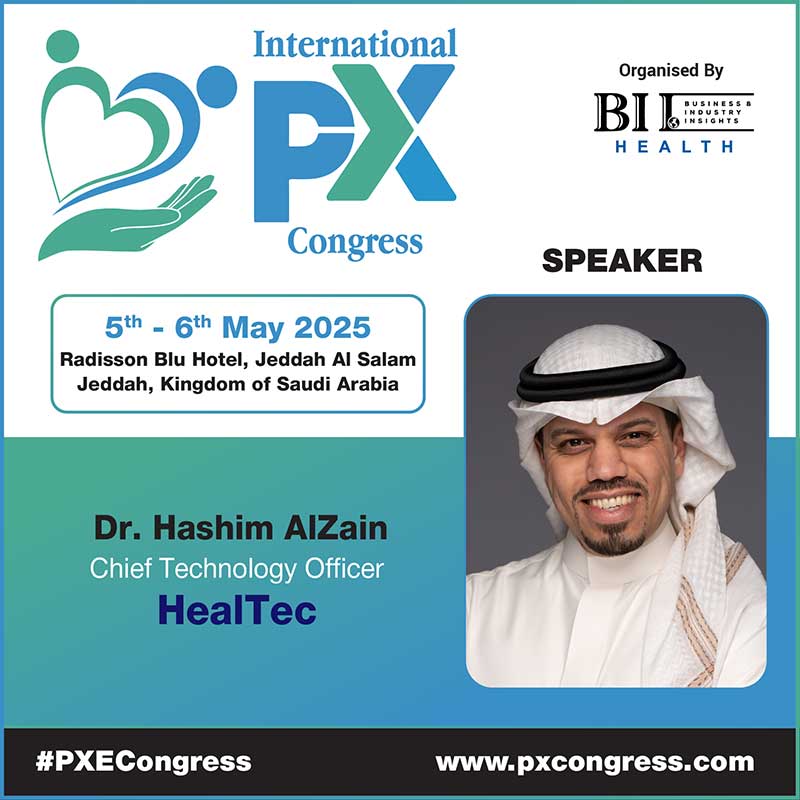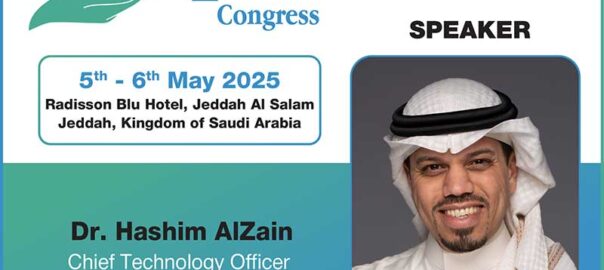Chief Technology Officer | HealTec
1. In your opinion, how have consumer expectations in healthcare evolved in recent years, and what are the key factors driving this change?
Consumer expectations in healthcare have significantly evolved, driven by factors like increased access to information, technological advancements, and a desire for more patient-centric care. In HealTec’s experience with patients needing prosthetic and orthotic devices, key evolutions include:
- Demand for personalized and aesthetically pleasing devices.
- Emphasis on comfort and ease of use.
- Need for comprehensive information and education.
- Desire for faster and more efficient service.
- Expectation of ongoing support and follow-up.
- Increased awareness of technology and potential for innovation.
2. The theme of this year’s congress emphasizes “exceptional care.” How do you define exceptional patient experience, and what strategies can healthcare organizations adopt to achieve it?
HealTec defines exceptional patient experience as a holistic journey where individuals feel valued, understood, empowered, and receive high-quality, personalized prosthetic and orthotic solutions that seamlessly integrate into their lives, enabling them to achieve their functional goals and enhance their overall well-being. This encompasses more than just the technical aspects of device manufacturing and fitting, which includes:
- Empathy and Personalized Attention.
- Focus on Functional Outcomes and Quality of Life.
- Empowerment through Information and Involvement.
- Seamless and Efficient Processes.
- High-Quality and Innovative Solutions.
- Comprehensive Support and Education.
- A Positive and Respectful Environment.
- Continuous Improvement through Feedback.
3. What role do emerging technologies (such as AI, telemedicine, and digital health platforms) play in shaping the future of patient experience?
Emerging technologies are poised to revolutionize the patient experience in the following ways:
- AI: Enables the creation of more personalized and adaptive devices through AI-powered analysis of patient data (movement patterns, muscle signals). This can lead to more intuitive control, improved comfort, and better functional outcomes. AI can also assist in design and manufacturing, potentially leading to faster turnaround times and more precise fits.
- Telemedicine: Facilitates remote consultations, follow-ups, and adjustments, reducing the need for in-person visits, especially for patients in remote areas or for routine checks. This improves convenience, reduces travel burdens, and allows for more timely interventions.
- Digital Health Platforms: Offer tools for remote monitoring of P&O device usage and patient progress, potentially identifying issues early. They can also empower patients with access to information, educational resources, and communication channels with their care team, fostering greater engagement and self-management. These platforms can streamline appointment scheduling, device ordering, and provide feedback mechanisms for continuous improvement.
4. From your experience, what are the biggest challenges healthcare providers face in meeting and exceeding patient expectations, and how can these be addressed?
Based on HealTec’s experience in the P&O field, some of the biggest challenges healthcare providers face in meeting and exceeding patient expectations include:
1.Addressing the Emotional and Psychological Aspects: Adapting to a prosthetic or orthotic device can be emotionally challenging. Patients may experience anxiety, frustration, or body image issues.
Addressing it: HealTec integrates psychological support or counseling services into the care pathway or provide referrals to mental health professionals. Foster a supportive and empathetic environment. Encourage peer support networks.
2.Balancing Functionality and Aesthetics: Patients desire devices that are both highly functional and aesthetically pleasing, aligning with their body image. Achieving this balance often requires complex design and manufacturing processes and managing patient financial expectations regarding what is technically feasible.
oAddressing it: HealTec invested in advanced design software and manufacturing technologies (CNC machining and 3D printing) that allow for greater customization and intricate designs. Foster open communication with patients about the possibilities and limitations, involving them in the design process to find a mutually agreeable solution.
3.Navigating Insurance and Financial Constraints: Coverage for advanced P&O devices can be complex, and financial limitations can impact the type of device a patient can access, potentially falling short of their desired outcome.
oAddressing it: Employ dedicated staff to assist patients with insurance pre-authorization and billing processes. Advocate for better coverage policies. Explore financing options or charitable resources for patients facing financial hardship. Maintain transparency about costs and available alternatives.
4.Managing Expectations Regarding Comfort and Adjustment: Achieving optimal comfort and fit can be an iterative process requiring multiple adjustments. Patients may have unrealistic expectations about immediate comfort.
oAddressing it: Clearly educate patients about the fitting and adjustment process, emphasizing that achieving perfect comfort may take time and several appointments using storytelling techniques. HealTec utilizes advanced scanning and fitting techniques for greater accuracy, and provide comprehensive instructions on device care and break-in periods in both languages: Arabic and English.
5.Providing Timely Access and Reducing Wait Times: The process from initial consultation to final device delivery can sometimes be lengthy, leading to patient frustration, especially when mobility is significantly impacted.
oAddressing it: HealTec streamlined internal workflows using digital tools for scheduling, documentation, and communication. Optimized the manufacturing process to reduce turnaround times. Communicated realistic timelines to patients at the outset and kept them informed of progress.
6.Ensuring Comprehensive Education and Training: Patents need thorough education on device usage, maintenance, and potential issues. Inadequate training can lead to dissatisfaction and improper use of the device.
oAddressing it: HealTec developed comprehensive patient education materials (videos, written guides, online resources). Dedicated sufficient time for in-person training sessions and offer ongoing support channels for questions and concerns.
5. Can you share a real-world example or best practice where a healthcare organization successfully transformed its patient experience?
HealTec successfully managed a Positional Plagiocephaly case for baby “Amir” by implementing proactive communication and visual progress tracking. Initially, Amir’s parents were anxious about his head shape and the helmet therapy. To address this, HealTec created a dedicated WhatsApp group where they could directly message HealTec’s CPOs anytime with concerns, receiving prompt reassurance and guidance, significantly reducing their anxiety. Furthermore, HealTec used an optical LED scanner to capture precise 3D scans of Amir’s head at the start of treatment and during follow-up appointments. By digitally superimposing the latest scan onto the initial one, Amir’s parents could visually witness the tangible improvement in his head shape.
This visceral demonstration of progress served as a powerful motivator, encouraging them to consistently adhere to the 23-hour-per-day helmet wear, ultimately leading to excellent corrective results. This proactive communication and visual feedback loop transformed their experience from one of anxiety to one of confidence and engagement in their child’s treatment.
6. What key message or insight would you like attendees to take away from your session at the Patient Experience Congress?
HealTec’s core mission is to transform human limitations into possibilities by deeply empathizing with the unique needs and aspirations of individuals facing physical challenges. We achieve this by going beyond simply manufacturing prosthetic and orthotic devices; instead, we craft personalized solutions that act as extensions of our patients’ bodies and their will.
Our approach is rooted in understanding that losing mobility or living with physical limitations impacts not just physical function but also emotional well-being, self-esteem, and social participation. HealTec envisions a world where physical limitations do not define an individual’s potential. By combining empathetic understanding with innovative prosthetic and orthotic solutions, we strive to empower our patients to overcome challenges, reclaim their independence, and realize their full capabilities, transforming perceived limitations into tangible possibilities for a richer and more engaged life.



